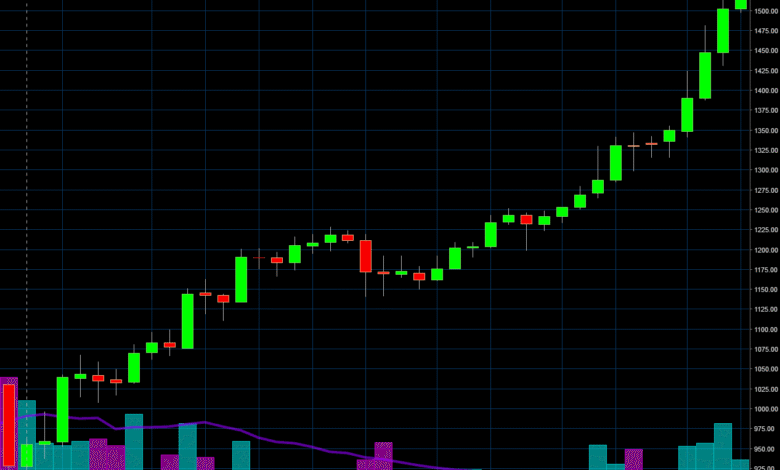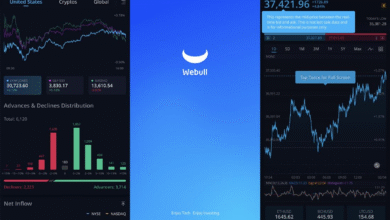Bitcoin Volatility: Market Reactions to U.S. Inflation Report

Bitcoin volatility has become a central theme in discussions about the cryptocurrency market, especially after the digital coin experienced drastic fluctuations recently. Following a surprising U.S. inflation report, Bitcoin saw a price drop to $117,719, only to rally back above $118,000. This dramatic shift came as the Producer Price Index (PPI) revealed a sharp 0.9% increase, well above the anticipated 0.2%, raising concerns about rising inflation and its impact on economic policy. As expectations grow around potential Fed rate cuts amidst these inflationary pressures, Bitcoin’s fluctuations have drawn significant attention from investors. The interplay of these economic indicators not only affects Bitcoin’s value but also highlights the intricacies of trading in a volatile cryptocurrency landscape.
The unpredictable nature of Bitcoin’s price movements has led many to analyze its volatility through various lenses, including market psychology and economic indicators. Recently, significant fluctuations have been tied to the latest U.S. inflation figures, stirring conversations about how such economic data influences investor sentiment in the crypto sphere. As the Producer Price Index indicated surprising inflationary growth, many are left questioning the implications for both traditional finance and digital currencies. With analysts suggesting an upcoming Fed rate cut could further shape these dynamics, stakeholders in the cryptocurrency domain are reinvigorated with both caution and opportunity. Understanding these interrelated factors is essential for navigating the ever-evolving landscape of Bitcoin and its counterparts.
Understanding Bitcoin Volatility
Bitcoin volatility is a well-known characteristic of the cryptocurrency market, with substantial price fluctuations that can occur within mere hours or days. Such volatility is often spurred by external factors like economic reports, which can sway investor sentiment. For instance, the recent sharp drop to $117,719 followed by a quick recovery demonstrates how market reactions to news can create a dramatic pendulum effect in Bitcoin’s price, causing both panic and excitement among investors.
This volatility is not merely random; it is influenced by significant economic indicators, such as the U.S. inflation report and the Producer Price Index (PPI). High inflation rates often trigger reactions within both traditional and digital currency markets, leading to staggering price swings. Investors tuned into these economic readings find that such measures can signify broader economic trends, resulting in increased volatility for Bitcoin as market participants react to the implications of such data.
Impact of the U.S. Inflation Report on Bitcoin
The recent U.S. inflation report has had a pronounced impact on Bitcoin, evidenced by the sharp volatility experienced in the wake of the announcement. Following a PPI surge of 0.9%, well above the anticipated 0.2%, Bitcoin saw a price drop that was directly linked to rising fears around inflation. This overwhelming market response underscores the sensitivity of Bitcoin to macroeconomic factors, revealing how intertwined the cryptocurrency market is with traditional economic indicators.
As inflation concerns mount, investors may feel compelled to seek refuge in assets perceived as more stable, increasing Bitcoin’s sensitivity to negative news related to inflation. The immediate selloff in Bitcoin as the dollar strengthened illustrates this point, as currency fluctuations can cause a domino effect in the cryptocurrency market. Investors are now left to reassess their strategies in light of potential Federal Reserve actions stemming from the inflation data.
Analyzing the Producer Price Index (PPI) and Its Effects
The Producer Price Index (PPI) is a critical economic indicator, acting as a measure of wholesale price changes and providing insights into inflation dynamics. The recent spike in the PPI by 0.9% reveals significant pressures in the supply chain that could impact consumer prices in the future, creating ripples across financial markets, including cryptocurrency. For Bitcoin investors, such inflationary signals can lead to volatility as traders recalibrate their positions based on anticipated central bank actions.
Moreover, a higher PPI could suggest continued inflation, which may invoke a hawkish response from the U.S. Federal Reserve. Such expectations can lead to upward pressure on interest rates, which often detracts investors from risky assets such as Bitcoin. Understanding the implications of the PPI allows investors to make more informed decisions and anticipate potential movements within the cryptocurrency market.
Federal Reserve Rate Cuts and Bitcoin’s Future
As the market continues to digest economic reports, the expectation of a Federal Reserve rate cut adds another layer of complexity to Bitcoin’s price trajectory. With a 96.5% likelihood of a rate cut predicted by the CME Fedwatch tool, investors are left contemplating how this anticipated monetary policy change might affect Bitcoin and other cryptocurrencies. Historically, lower interest rates can lead to increased investment in risk assets, potentially fueling another surge in Bitcoin prices.
Conversely, any indications from the Fed suggesting a more hawkish stance could dampen sentiment in the cryptocurrency market. As we approach the September Federal Open Market Committee (FOMC) meeting, investors are keen to gauge both Bitcoin’s price movements and broader market reactions as they prepare for possibly significant shifts in the economic landscape. Keeping watch on Fed commentary will be crucial for predicting how Bitcoin and other cryptocurrencies will respond to these economic developments.
Market Reactions to Economic Data and Bitcoin
The reaction of the market to economic data, particularly regarding inflation and PPI releases, shows the intricate relationship between traditional financial indicators and cryptocurrency valuations. The volatility in Bitcoin prices reflects a broader trend where traders and investors quickly hop onto news, translating economic data into real-time market movements. With a backdrop of rising inflation fears, Bitcoin’s price swings can seem amplified as both retail and institutional investors react to macroeconomic forces.
This interplay makes the cryptocurrency market highly dynamic and responsive, as evidenced by the recent fluctuations caused by inflation reports. Investors must navigate this volatility while being aware of how economic factors may reshape the market landscape. Understanding that Bitcoin’s price is not solely dictated by its technology or adoption but also by economic circumstances is essential for anyone looking to engage with this asset class.
Future Expectations for Cryptocurrency Investment
Looking ahead, the trajectory of Bitcoin and other cryptocurrencies will largely depend on forthcoming economic indicators and the Federal Reserve’s monetary policy decisions. With persistent inflation concerns likely to remain at the forefront, investors must prepare for potential volatility. Such market conditions could create both opportunities and challenges, as the delicate balance of price speculation and economic reality plays out.
The nuanced relationship between economic indicators like the PPI, inflation reports, and the performance of Bitcoin cannot be overstated. Active investors in the cryptocurrency market must keep a keen eye on these developments, as future trends could provide insights into the kind of market volatility and investment strategies that may emerge. Educating oneself about the implications of these economic reports is crucial for successful navigation within this fast-paced market environment.
Navigating Bitcoin Market Sentiment
Market sentiment surrounding Bitcoin can significantly influence its price action, particularly during times of economic uncertainty. An unexpected spike in inflation or PPI can trigger panic selling or buying frenzies, reflecting how emotional responses can dictate trading behavior. Understanding the psychology behind market sentiment can provide strategic insights for investors looking to capitalize on the inherent volatility of Bitcoin.
As economic indicators continue to shape market perceptions, investors should develop strategies that factor in both sentiment and data-driven insights. Monitoring social media, news outlets, and economic releases will provide a well-rounded view of market sentiment, allowing investors to anticipate potential shifts and adjust their positions accordingly. Hence, navigating Bitcoin’s market sentiment involves not just reacting to economic data but also understanding the narratives driving investor behavior.
The Interplay of Tariffs, Inflation, and Bitcoin
The relationship between U.S. tariffs and inflation rates is a critical factor that many analysts consider when assessing Bitcoin’s performance. Tariffs can impact wholesale prices, contributing to inflationary pressures reflected in the PPI. These economic policies can create an environment where assets like Bitcoin experience heightened volatility as market participants speculate on the effects of tariffs on inflation and consequently on interest rates.
Understanding this interplay can help investors make more informed decisions about their Bitcoin holdings. As tariffs evolve and economic conditions change, the implications for the cryptocurrency market can be profound. Investors need to remain vigilant as policy changes can lead to significant price swings, especially during periods of economic uncertainty when inflation fears are prevalent.
Strategies for Investing During Inflationary Times
In times of increased inflation, particularly when metrics like the PPI indicate rising prices, investors may need to adjust their strategies for investing in Bitcoin and other cryptocurrencies. Some investors may seek to hedge against inflation by allocating funds to Bitcoin, viewing it as a store of value similar to gold. However, the inherent volatility of Bitcoin means this strategy comes with risks that must be carefully managed.
Diversification can be a key strategy during inflationary periods, as investors may choose to spread their investments across various assets. This can help mitigate the risks associated with Bitcoin’s volatility while still allowing investors to benefit from its potential upside. Keeping abreast of inflation indicators and Fed policy changes will be essential as investors navigate their strategies during such economic climates.
Frequently Asked Questions
What impact does Bitcoin volatility have on the cryptocurrency market after a significant price drop?
Bitcoin volatility can significantly affect the entire cryptocurrency market, especially after a notable price drop. For instance, Bitcoin recently experienced a sharp fall to $117,719 following a hot U.S. inflation report. Such volatility often triggers a sell-off across various cryptocurrencies as investors react to market sentiment and potential changes in monetary policy. This heightened uncertainty can lead to increased fluctuations in prices as traders adjust their positions.
How does the U.S. inflation report influence Bitcoin volatility?
The U.S. inflation report, particularly indicators like the Producer Price Index (PPI), plays a critical role in influencing Bitcoin volatility. A surprising surge in the PPI, which measures wholesale goods prices, can lead to immediate impacts on Bitcoin’s price as it raises concerns about rising inflation. In recent scenarios, a higher-than-expected PPI resulted in a quick Bitcoin price drop as investors anticipated a more imposing stance from the Federal Reserve, influencing market dynamics.
Why does a Fed rate cut affect Bitcoin volatility?
A Fed rate cut often has a direct correlation with Bitcoin volatility. When the Federal Reserve signals a possible reduction in interest rates, it tends to weaken the U.S. dollar, prompting investors to seek alternative assets like Bitcoin. This situation can lead to increased buying pressure, causing Bitcoin prices to recover from volatility-induced drops. For instance, market expectations of a 96.5% chance of a rate cut could ultimately relieve pressure on Bitcoin prices in the volatile landscape.
What role does the Producer Price Index (PPI) play in Bitcoin price fluctuations?
The Producer Price Index (PPI) is a vital economic indicator that directly relates to Bitcoin price fluctuations. A surprising PPI increase, such as a 0.9% rise above expectations, can lead to immediate volatility in Bitcoin as investors react to potential inflationary pressures. This response is rooted in market psychology, where rising inflation typically drives investors to adjust their holdings, contributing to the inherent volatility in Bitcoin’s price.
How do expectations of future inflation affect Bitcoin volatility?
Expectations of future inflation can create significant volatility in Bitcoin’s price. When inflation indicators, like the PPI, suggest rising costs, it often leads to increased market uncertainty. Investors may choose to liquidate positions, pushing Bitcoin lower, or may move funds into Bitcoin expecting it to serve as a hedge against inflation. The ongoing monitoring of inflation data is crucial for predicting Bitcoin’s volatility and market behavior.
| Key Event | Details |
|---|---|
| Bitcoin Price Shock | Bitcoin dropped to $117,719 before recovering above $118,000. |
| U.S. PPI Surge | U.S. Producer Price Index (PPI) increased by 0.9%, exceeding the 0.2% forecast. |
| Market Reaction | The strong PPI data led to dollar strength and initial selloff in Bitcoin. |
| Federal Reserve Impact | Market is anticipating Fed to maintain or adjust rates based on inflation data. |
| Upcoming Fed Meeting | The next FOMC meeting is crucial for predicting future monetary policy. |
| Inflation Concerns | Persistent inflation data highlights ongoing worries in the marketplace. |
Summary
Bitcoin volatility remains a significant concern for investors as recent market events have showcased drastic fluctuations in its pricing. The sharp drop and subsequent recovery of Bitcoin prices, influenced by the unexpected surge in the U.S. PPI, underline the cryptocurrency’s sensitivity to macroeconomic indicators. As we look towards future monetary policy discussions by the Federal Reserve, it is clear that Bitcoin’s fate will remain closely tied to inflation trends, making ongoing monitoring essential for those involved in the cryptocurrency market.




